Abstract
Brewer thioglycolate-elicited mouse peritoneal macrophages were as active as resident peritoneal macrophages in the phagocytosis of opsonized Staphylococcus epidermidis but were unable to kill ingested microorganisms. This decreased functional activity was restricted to Brewer thioglycolate-elicited macrophages, since peritoneal macrophages elicited with NIH thioglycolate, alone or supplemented with agar and methylene blue, were as active as resident peritoneal macrophages. No effect of agar on the functional activities of macrophages was observed. A defective intracellular killing by peritoneal macrophages due to Brewer thioglycolate was seen only after an intraperitoneal injection with thioglycolate, not after in vitro incubation of resident macrophages with thioglycolate. The results of this study show that, depending on the kind of thioglycolate used, the functional characteristics of elicited macrophages may alter. However, none of the forms of thioglycolate investigated induced the recruitment of activated macrophages.
Full text
PDF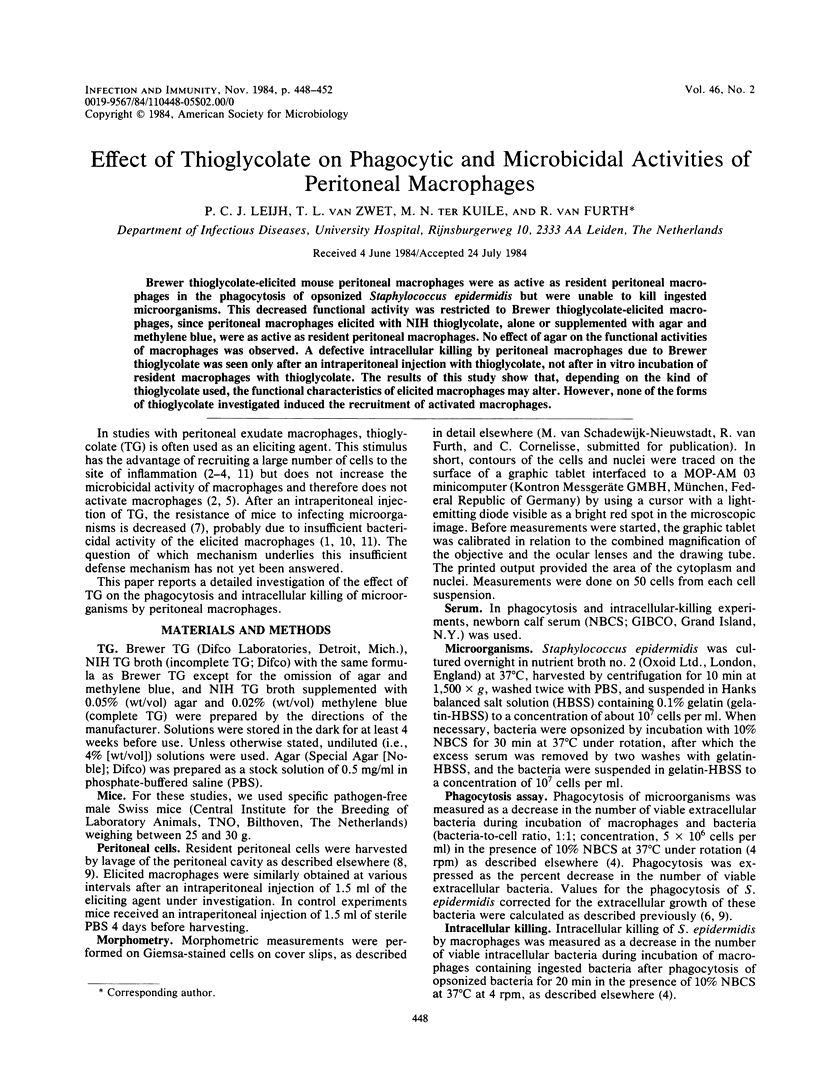
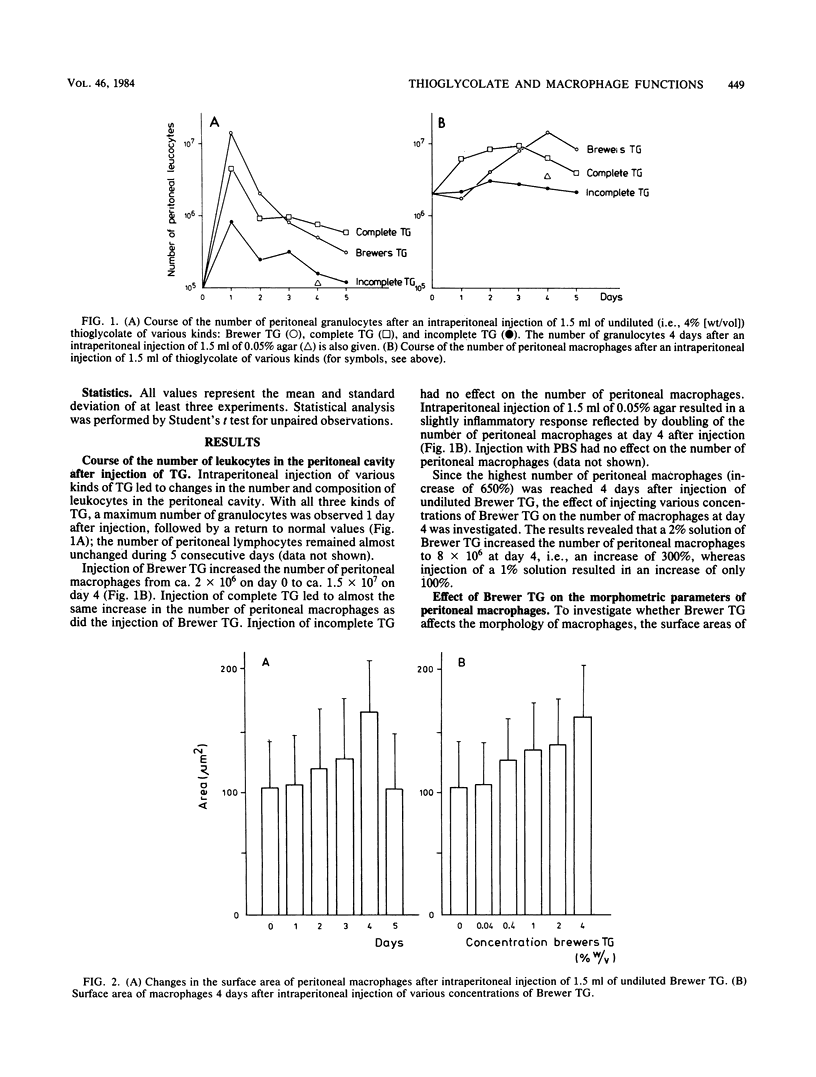
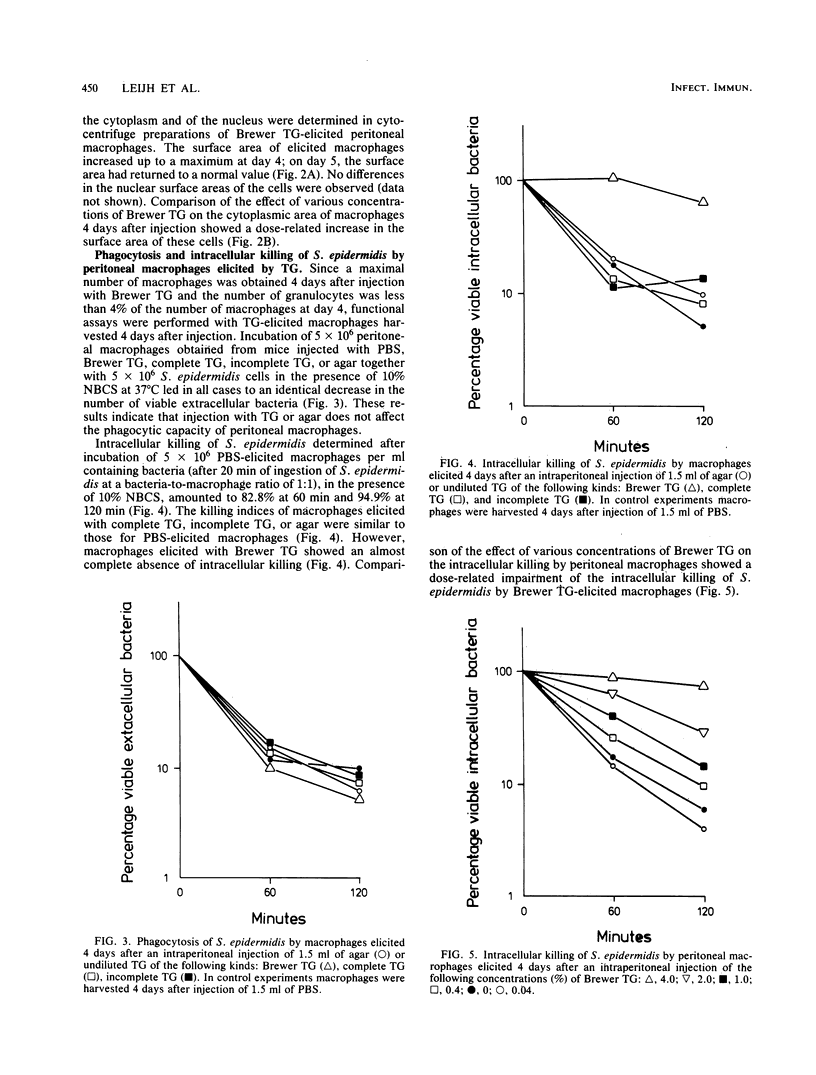
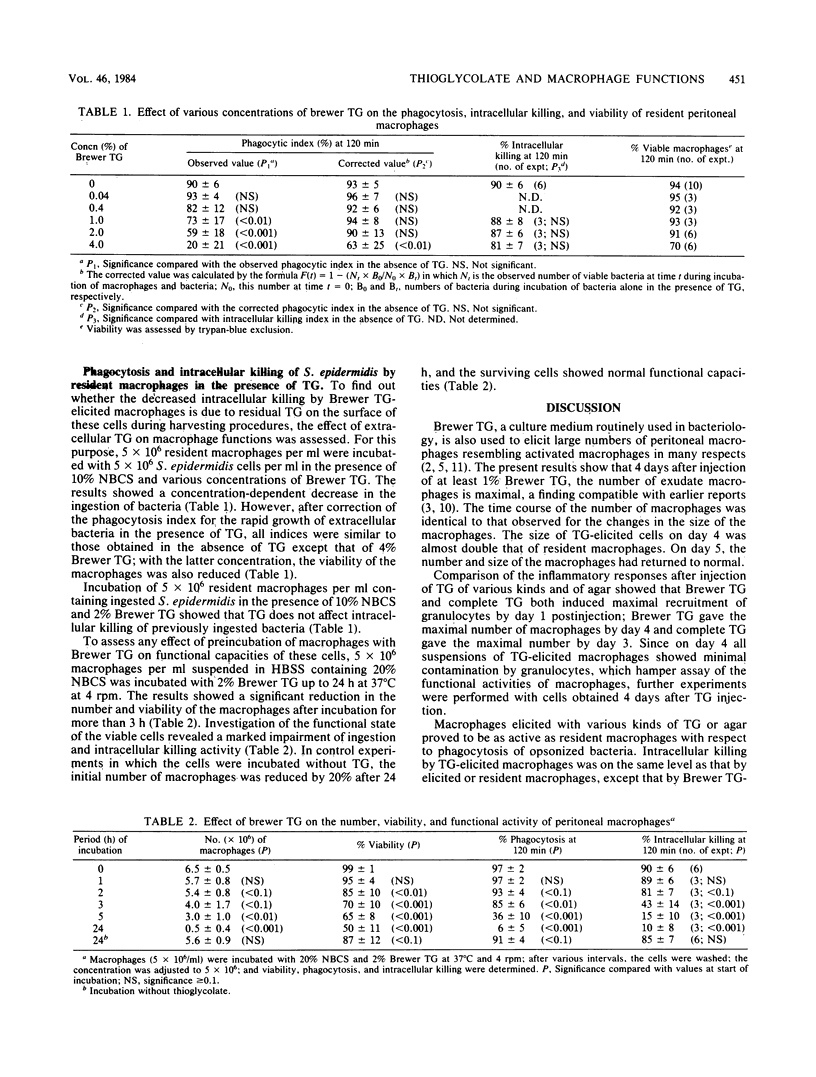
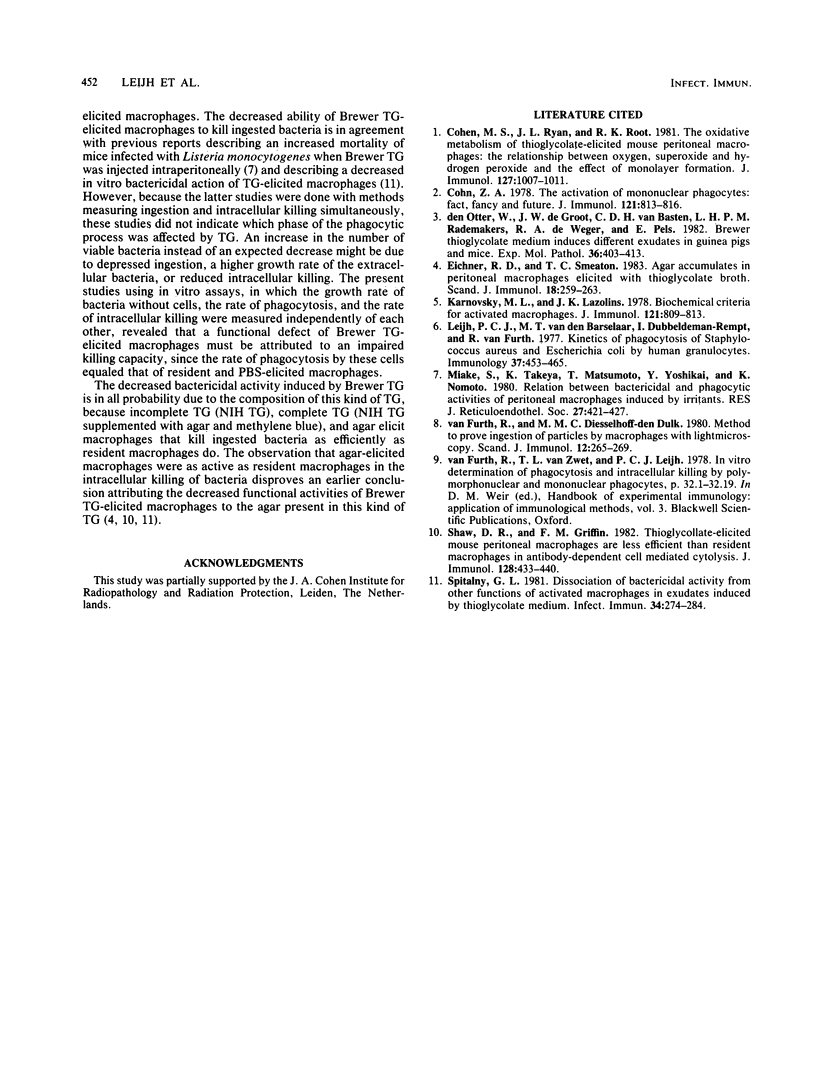
Selected References
These references are in PubMed. This may not be the complete list of references from this article.
- Cohen M. S., Ryan J. L., Root R. K. The oxidative metabolism of thioglycollate-elicited mouse peritoneal macrophages: the relationship between oxygen, superoxide and hydrogen peroxide and the effect of monolayer formation. J Immunol. 1981 Sep;127(3):1007–1011. [PubMed] [Google Scholar]
- Cohn Z. A. Activation of mononuclear phagocytes: fact, fancy, and future. J Immunol. 1978 Sep;121(3):813–816. [PubMed] [Google Scholar]
- Den Otter W., De Groot J. W., Van Basten C. D., Rademakers L. H., De Weger R. A., Pels E. Brewer thioglycollate medium induces different exudates in guinea pigs and mice. Exp Mol Pathol. 1982 Jun;36(3):403–413. doi: 10.1016/0014-4800(82)90069-7. [DOI] [PubMed] [Google Scholar]
- Eichner R. D., Smeaton T. C. Agar accumulates in rat peritoneal macrophages elicited with thioglycollate broth. Scand J Immunol. 1983 Sep;18(3):259–263. doi: 10.1111/j.1365-3083.1983.tb00866.x. [DOI] [PubMed] [Google Scholar]
- Karnovsky M. L., Lazdins J. K. Biochemical criteria for activated macrophages. J Immunol. 1978 Sep;121(3):809–813. [PubMed] [Google Scholar]
- Leijh P. C., van den Barselaar M. T., van Zwet T. L., Dubbeldeman-Rempt I., van Furth R. Kinetics of phagocytosis of Staphylococcus aureus and Escherichia coli by human granulocytes. Immunology. 1979 Jun;37(2):453–465. [PMC free article] [PubMed] [Google Scholar]
- Miake S., Takeya K., Matsumoto T., Yoshikai Y., Nomoto K. Relation between bactericidal and phagocytic activities of peritoneal macrophages induced by irritants. J Reticuloendothel Soc. 1980 Apr;27(4):421–427. [PubMed] [Google Scholar]
- Shaw D. R., Griffin F. M., Jr Thioglycollate-elicited mouse peritoneal macrophages are less efficient than resident macrophages in antibody-dependent cell-mediated cytolysis. J Immunol. 1982 Jan;128(1):433–440. [PubMed] [Google Scholar]
- Spitalny G. L. Dissociation of bactericidal activity from other functions of activated macrophages in exudates induced by thioglycolate medium. Infect Immun. 1981 Oct;34(1):274–284. doi: 10.1128/iai.34.1.274-284.1981. [DOI] [PMC free article] [PubMed] [Google Scholar]
- van Furth R., Diesselhoff-den Dulk M. M. Method to prove investigation of particles by macrophages with light microscopy. Scand J Immunol. 1980;12(3):265–269. doi: 10.1111/j.1365-3083.1980.tb00066.x. [DOI] [PubMed] [Google Scholar]


